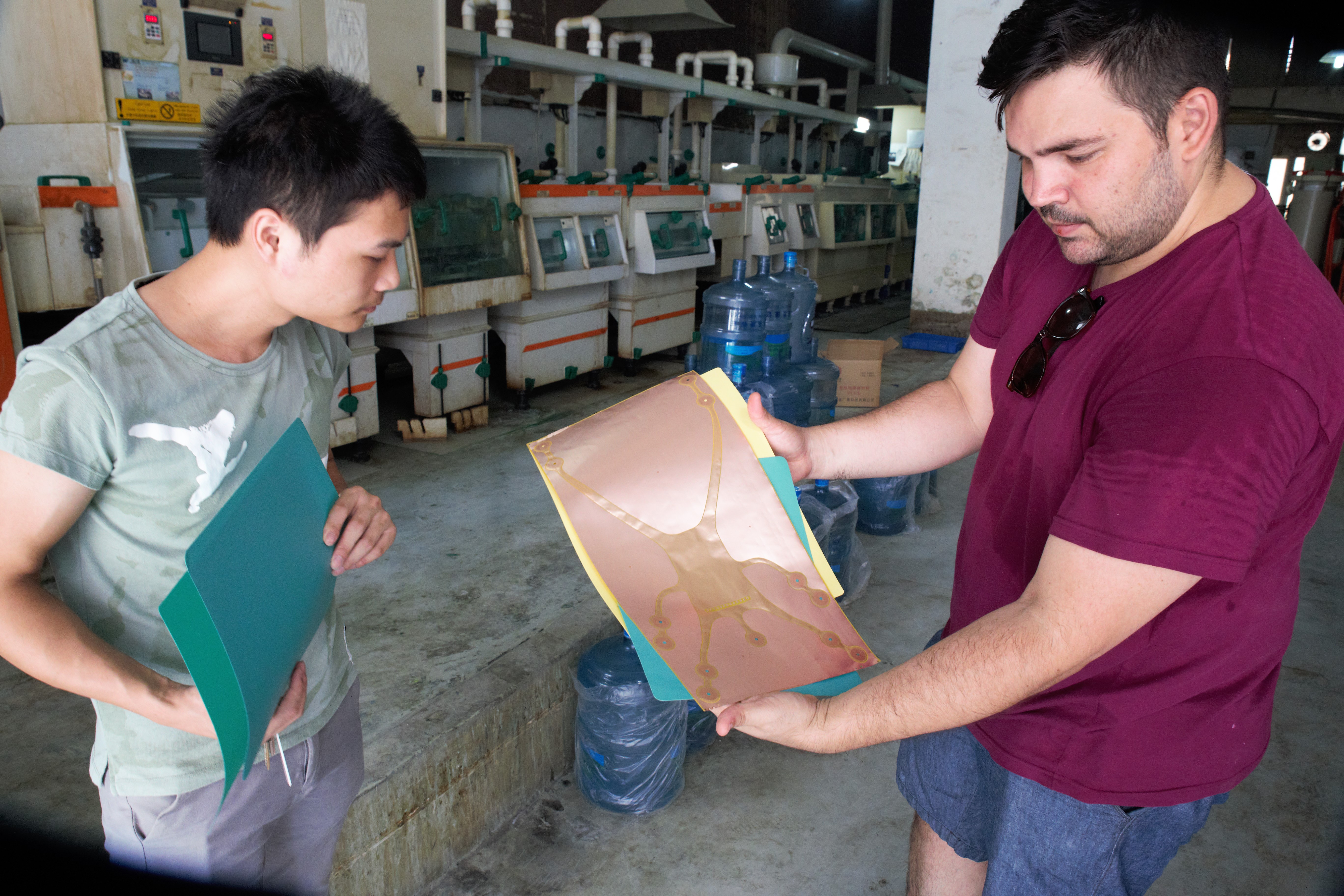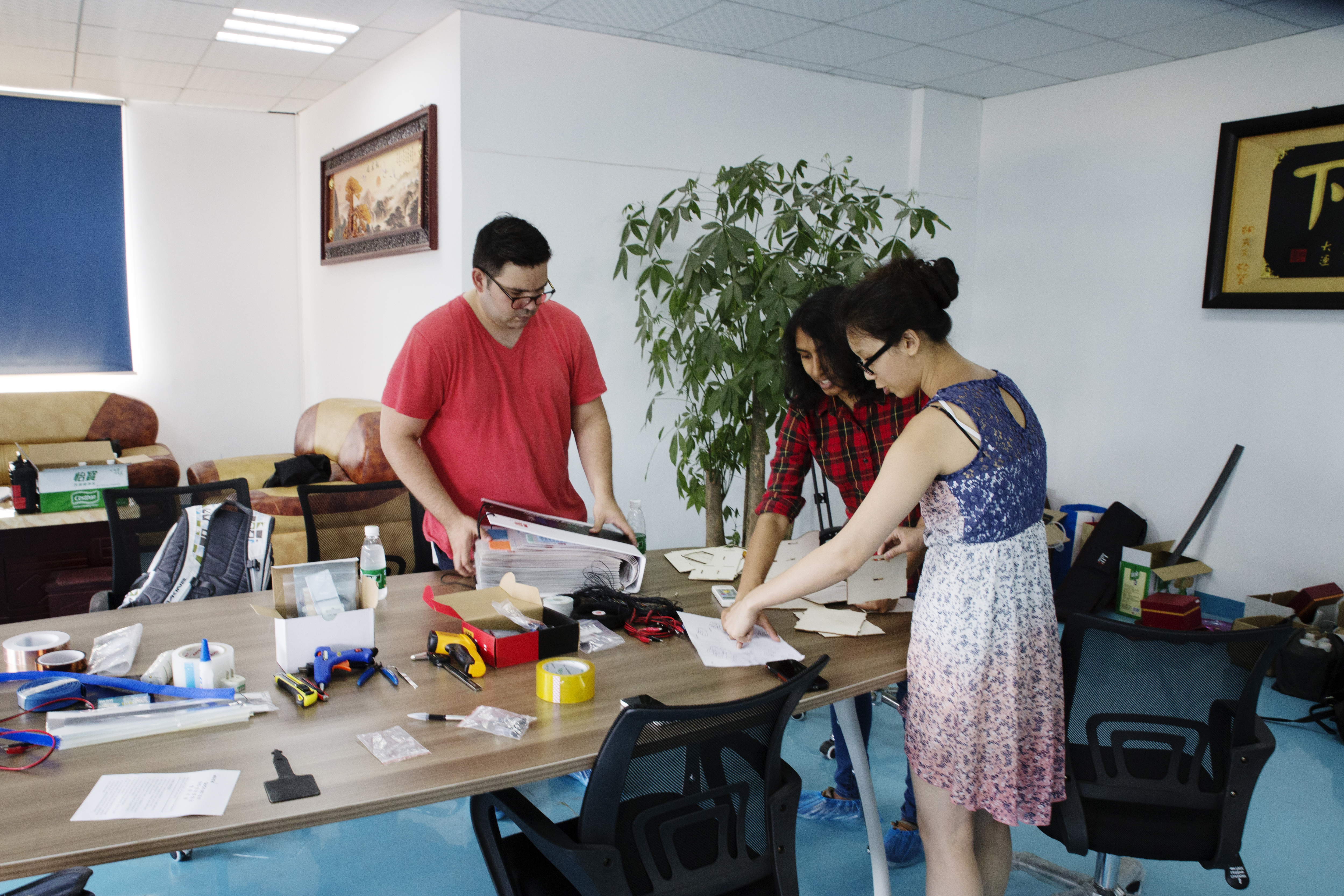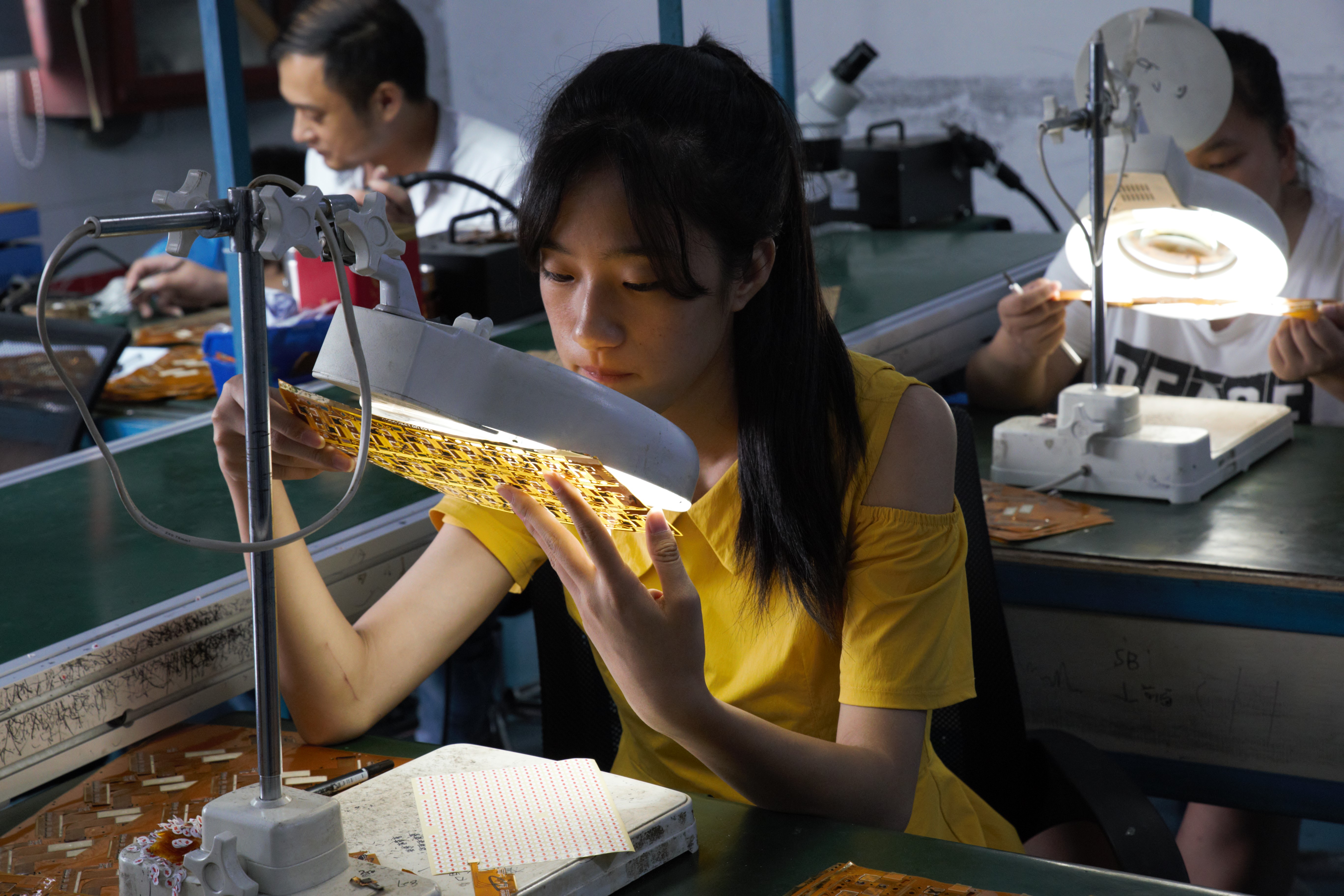The King Credie factory, in the Bao’an district of Shenzhen, focuses on the final steps of flexible printed circuit board (FPCB) manufacturing: silkscreen, coverlay lamination, and reinforcements. FPCB manufacturing interested us because flexible electronics are popular in human-computer interactions (HCI) research and are featured in multiple HCI projects. This manufacturing process is similar to the usual rigid PCB manufacturing process. The main difference is that, instead of rigid underlying layers of fiberglass (FR-4, for example), King Credie uses a thin polyimide plastic film. Furthermore, the facility does automated circuit board testing and assembly using automated pick-and-place machines. The exposure, etching, and laser cutting is done in a separate location, and we moved between the two. We found some manufacturing steps to be particularly easy and interesting to modify. For example, since coverlay is laminated into the circuit board using a heat press, we discovered that we could sandwich various materials between the coverlay and the circuit, thereby creating flexible printed circuit boards with materials, such as leaves and paper, embedded into them. This discovery became a foundation for our various projects on the trip.





